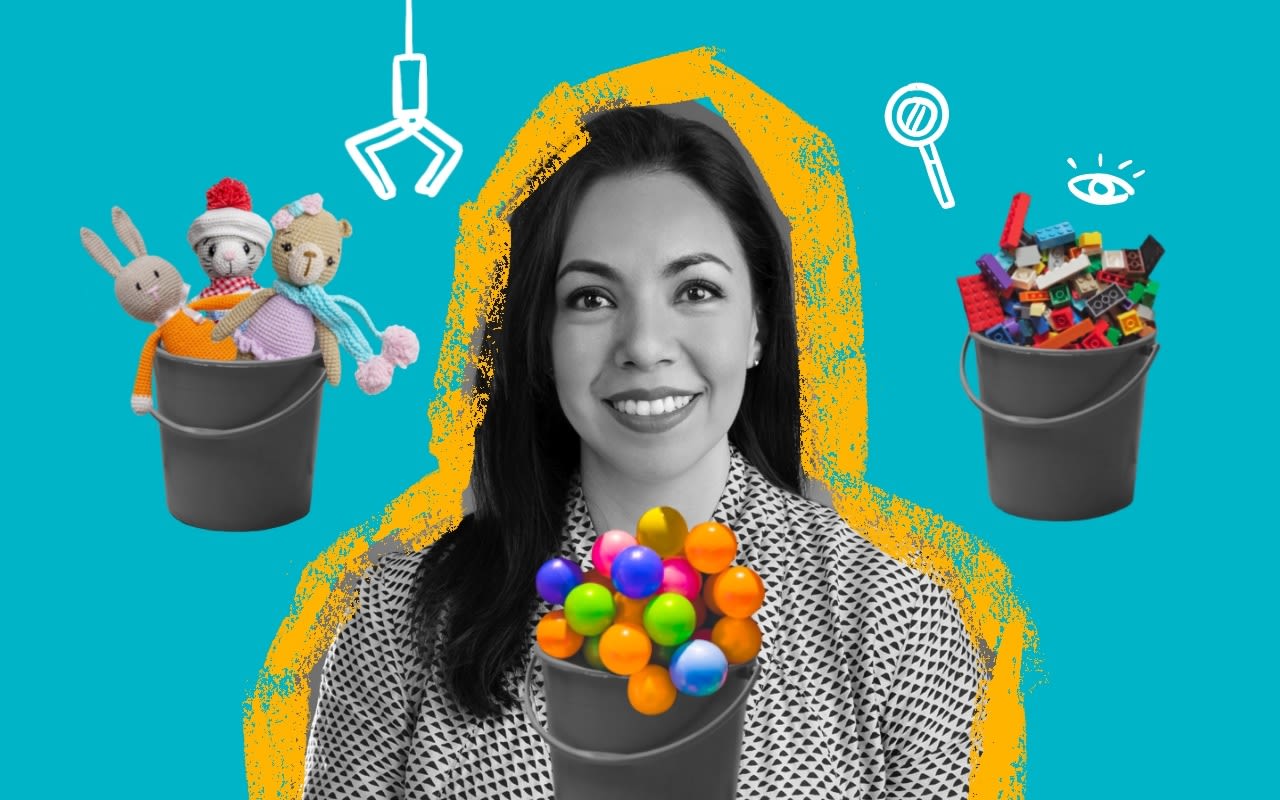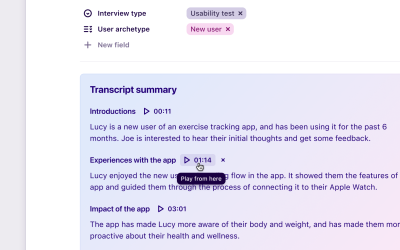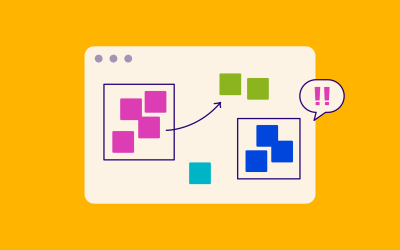Talking tagging taxonomies with Laura Mata

Laura is a Lead Design Researcher at Designit Madrid. Together, we drilled down on her practice with a couple of questions relating to tagging and taxonomies.
In this session, we’ll be chatting to Laura about:
What a tagging taxonomy means to her
How she goes about building her taxonomy
How she structures her data for efficiency during analysis
What level of granularity she uses when tagging
How she tackles onboarding and collaboration
Her advice and wisdom for creating a taxonomy
Looking for something to read? You’re in luck—check out these key quotes:
A matter of categorization
For me, a tagging taxonomy is about creating analysis categories. I once read the following analogy in a book, and I thought it was a brilliant metaphor to explain analysis categories. Imagine you have a trunk full of toys and they’re all mixed. You have balls, dolls, cars, construction sets, et cetera. And you’re asked to rearrange the toys into buckets and categorize them. So a bucket can be dolls, a bucket can be balls, a bucket can be construction sets. And then, you take all the mixed toys, and you separate them into a corresponding bucket. That’s what you’re doing when you’re analyzing data.
You have mixed data, and you’re taking bits and pieces of it and clustering it into categories that make sense to analyze later. The categories can vary a lot. With balls, for example, you can have individual sports and team sports, and that’s how you arrange them. The level of granularity is up to you. It depends on what you’re trying to find out through your research questions. You’re trying to break data into small, manageable chunks that fit into a category that you previously defined as the object of your study.
Building a taxonomy
We start with a top-down approach, where we have a set of predefined categories, but they’re not set in stone. Once I have our data, I let it speak to me. After we tag a specific category, there might be a tag we didn’t use because it didn’t talk to the data, which we will delete. If we see the data reveal something we didn't anticipate or didn’t have in our taxonomy, we create a tag. So we use a mix of both the top-down and bottom-up approaches.
Structuring your data for efficiency
If I have a vast data set with participants from different industries, I’ll create different note boards divided by industry. If I have different roles and companies, I’ll also create different note groups by role. I do very granular filtering afterward. This way, I have the right context and know that certain data sets belong to a particular industry or role.
Tagging as a team
Most of the time, I’ll create a taxonomy because I’m the research owner of that project, and then I’ll have a couple of onboarding sessions with the team. I’ll show them the research objectives, the script or whatever we’re doing, and the taxonomy. Then we’ll brainstorm together and chat about anything missing or how things are grouped into tag groups. Typically one session isn’t enough, though. After the first session, everything might seem very clear, and everyone’s happy and onboard. Then when they have the data in front of them, they panic; they’re unsure how to tag it.
It’s very, very tricky, and there are always doubts. Always.
I’ll tag about half an interview in a group session so that the team can watch how I do it. Then they’ll ask questions and start tagging their own interviews. We’ll also create a Slack channel for the project. When it comes to tag duplication, we have a rule that every time you create a new tag, you have to say it in the Slack channel because then the others know that if they see data that matches that tag, then that tag is already created and they don’t need to duplicate it.
Perfection is the enemy of getting things done
I always say it doesn’t have to be perfect; it just doesn’t. Done is always better than perfect.
I think Dovetail helps a lot in that sense. All the content is searchable, so you can always go back to it even if you miss something. Having a deadline also helps. In our industry, we work within short time frames and don’t have the luxury of sitting on things because we feel paralyzed. We also work as a team and support each other a lot. We’re working together most of the time, or if we have individual tasks, we’ll regroup and share what we’ve done.
Tagging taxonomies are one of the most discussed topics in Dovetail’s Slack community, you can continue the discussion there with over 2,700 other Dovetailers. If there’s a particular topic you’d love to hear more about, please let us know!
Written by Laura Mata, Lead Design Researcher, Designit and Written by Liz Ross, Content Lead, Dovetail.
Get started for free
Log in or sign up
Get started for free
or
By clicking “Continue with Google / Email” you agree to our User Terms of Service and Privacy Policy


